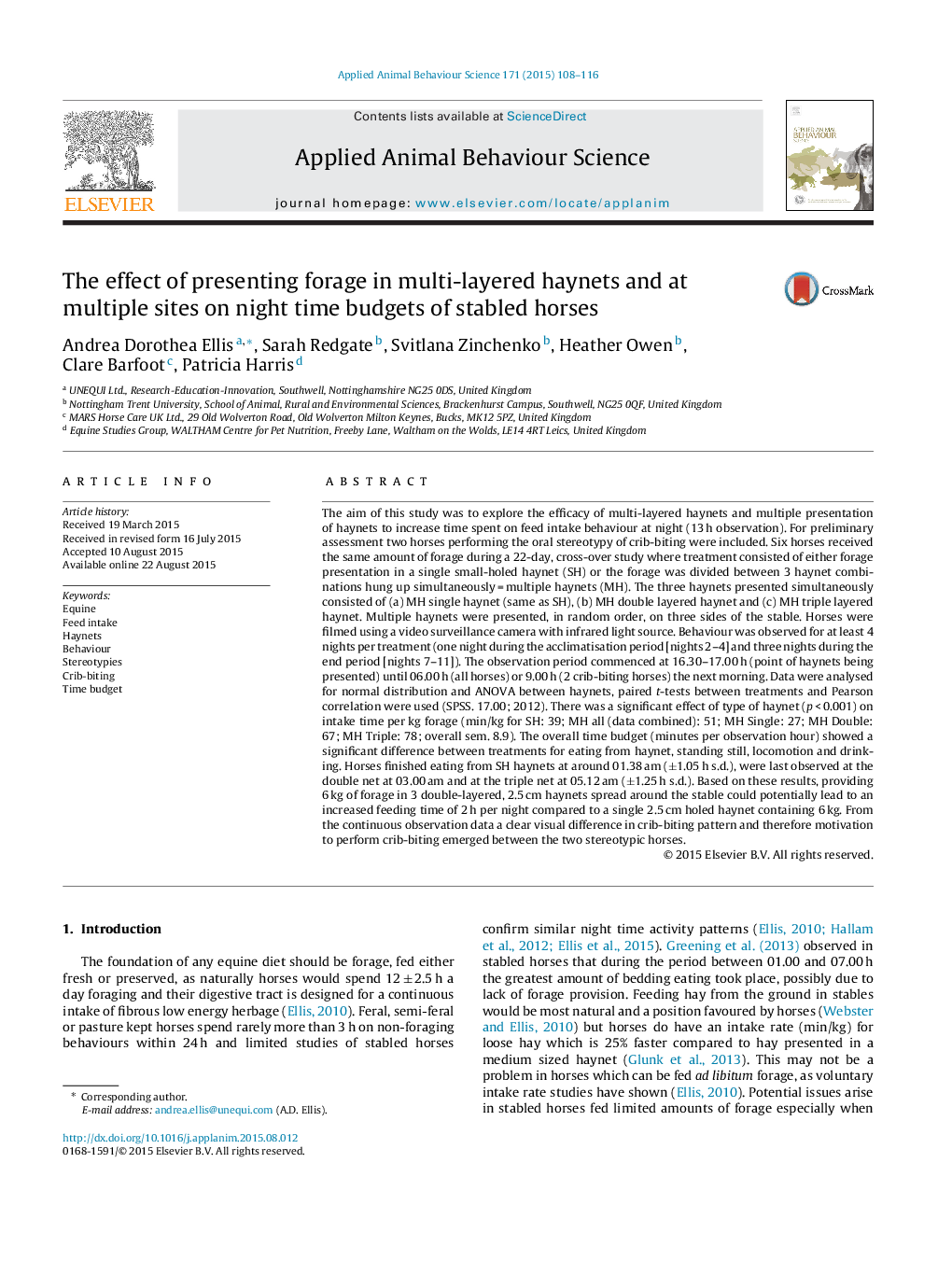| Article ID | Journal | Published Year | Pages | File Type |
|---|---|---|---|---|
| 6379476 | Applied Animal Behaviour Science | 2015 | 9 Pages |
Abstract
The aim of this study was to explore the efficacy of multi-layered haynets and multiple presentation of haynets to increase time spent on feed intake behaviour at night (13 h observation). For preliminary assessment two horses performing the oral stereotypy of crib-biting were included. Six horses received the same amount of forage during a 22-day, cross-over study where treatment consisted of either forage presentation in a single small-holed haynet (SH) or the forage was divided between 3 haynet combinations hung up simultaneously = multiple haynets (MH). The three haynets presented simultaneously consisted of (a) MH single haynet (same as SH), (b) MH double layered haynet and (c) MH triple layered haynet. Multiple haynets were presented, in random order, on three sides of the stable. Horses were filmed using a video surveillance camera with infrared light source. Behaviour was observed for at least 4 nights per treatment (one night during the acclimatisation period [nights 2-4] and three nights during the end period [nights 7-11]). The observation period commenced at 16.30-17.00 h (point of haynets being presented) until 06.00 h (all horses) or 9.00 h (2 crib-biting horses) the next morning. Data were analysed for normal distribution and ANOVA between haynets, paired t-tests between treatments and Pearson correlation were used (SPSS. 17.00; 2012). There was a significant effect of type of haynet (p < 0.001) on intake time per kg forage (min/kg for SH: 39; MH all (data combined): 51; MH Single: 27; MH Double: 67; MH Triple: 78; overall sem. 8.9). The overall time budget (minutes per observation hour) showed a significant difference between treatments for eating from haynet, standing still, locomotion and drinking. Horses finished eating from SH haynets at around 01.38 am (±1.05 h s.d.), were last observed at the double net at 03.00 am and at the triple net at 05.12 am (±1.25 h s.d.). Based on these results, providing 6 kg of forage in 3 double-layered, 2.5 cm haynets spread around the stable could potentially lead to an increased feeding time of 2 h per night compared to a single 2.5 cm holed haynet containing 6 kg. From the continuous observation data a clear visual difference in crib-biting pattern and therefore motivation to perform crib-biting emerged between the two stereotypic horses.
Related Topics
Life Sciences
Agricultural and Biological Sciences
Animal Science and Zoology
Authors
Andrea Dorothea Ellis, Sarah Redgate, Svitlana Zinchenko, Heather Owen, Clare Barfoot, Patricia Harris,
